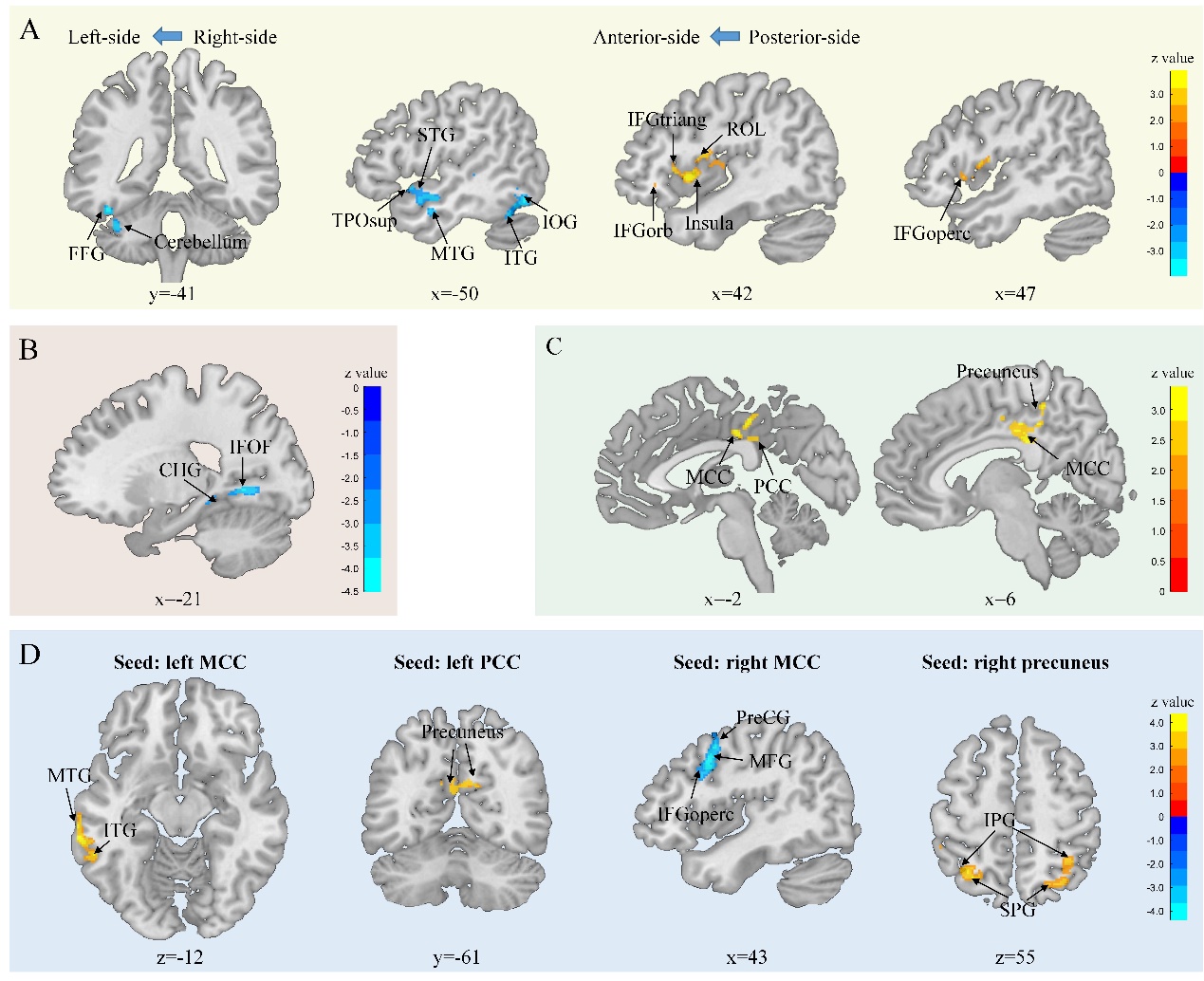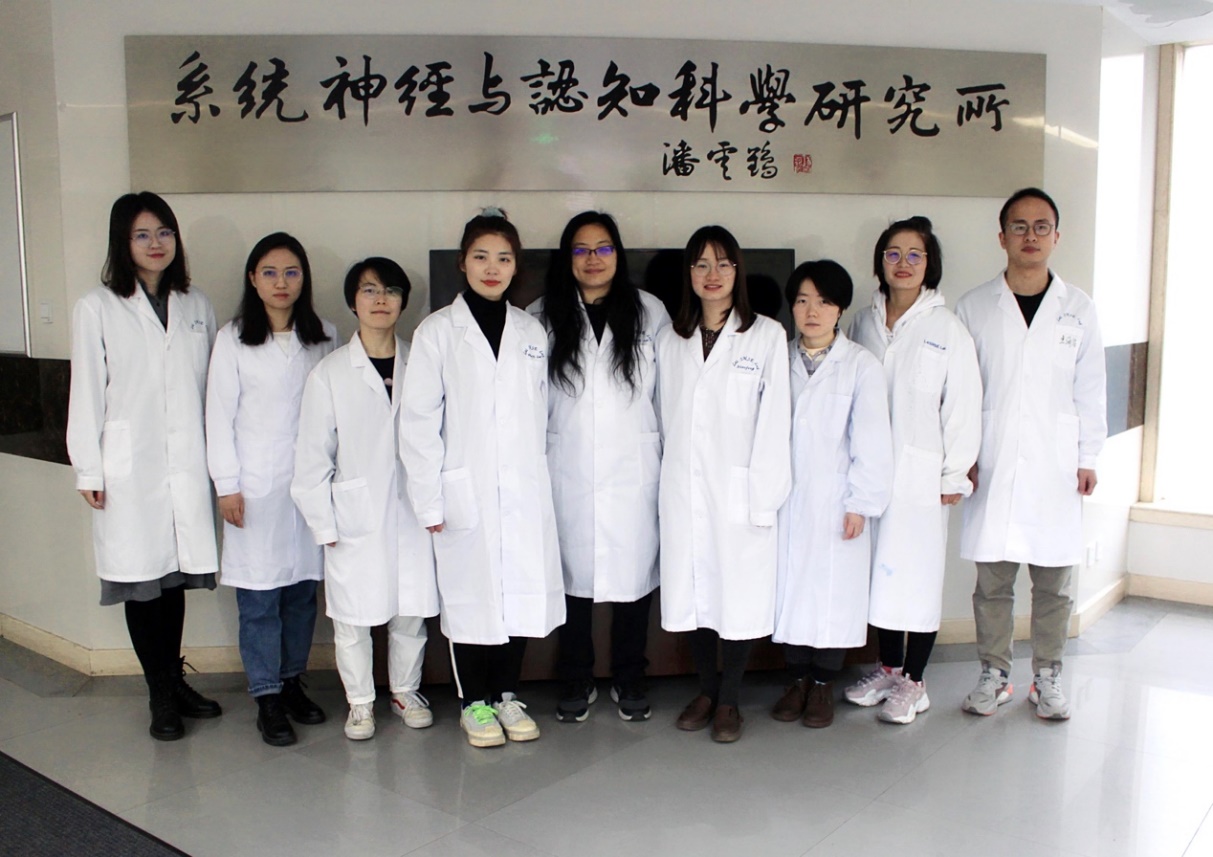XinYi Lai's group published in Asian Journal Of Psychiatry
Dr. Hsin-Yi Lai, Dr. Tao Li and Dr. Wenxin Tang collaborated to explore structural and functional alterations in drug-naïve obsessive-compulsive disorder patients by 7.0T multimodal magnetic resonance imaging. Their findings were published in an internationally renowned journal “Asian Journal of Psychiatry” in December. 2023. This study comprehensively revealed not only the classical cortico-striatal-thalamic-cortical (CSTC) circuit, but also limbic system, default network, visual, language, and sensorimotor networks in the pathogenesis of OCD.
Obsessive-compulsive disorder (OCD), the fourth most common psychiatric disorder, is a common chronic mental disorder characterized by obsessions and compulsions, which is OCD is a refractory, highly comorbid anddisabling disease. The lifetime prevalence of OCD is 2%-3%. The main characteristics of OCD include repeated occurrences of uncontrollable thoughts (obsessions) and behaviors (compulsions). Residual symptoms, easy recurrence and protraction of the disease course not only seriously affects the quality of life and social functions of patients, but also increases the economic burdens arising from the treatment. Therefore, OCD has become one of the top ten disabling diseases. However, the complex etiology and pathological mechanism of OCD is not yet fully understood.
In recent years, magnetic resonance imaging (MRI) has become a noninvasive and nonradioactive tool to reveal brain abnormalities in OCD. Previous MRI studies have demonstrated both structural and functional alterations of the cortico-striato-thalamo-cortical (CSTC) circuits consisting of the orbitofrontal cortex (OFC), anterior cingulate cortex (ACC), caudate, putamen, globus pallidus, thalamus and subthalamic nucleus, which might play vital roles in the pathogenesis of OCD. Additionally, recent studies have found abnormal brain function in regions outside the CSTC circuits including amygdala-hippocampus pathways, frontal-parietal connectivity and cerebellar-default mode network connectivity. However, these findings were inconsistent across studies due to several limitations, including small sample sizes, different inclusion/exclusion criteria, varied demographic characteristics and symptom dimensions, comorbidity, and medication status. Prominent and replicable neuroimaging biomarkers remain to be discovered.
Drug-naïve OCD patients exhibited significantly increased gray matter volume in the frontal cortex, especially in the orbitofrontal cortex, as well as volumetric reduction in the temporal lobe, occipital lobe and cerebellum. In addition, the integrity of white matter in the cingulate and inferior fronto-occipital fasciculus was compromised. Increased neural activities were observed in the cingulate gyri and precuneus. Increased temporal-middle cingulate and posterior cingulate-precuneus functional connectivity and decreased frontal-middle cingulate connectivity were further detected. Decreased fractional anisotropy values were found in the cingulum-hippocampus gyrus and inferior fronto-occipital fascicle in OCD patients. Moreover, significantly altered imaging features were related to OCD symptom severity. The severity of obsessions could be explained by abnormal brain activities in the CSTC circuit, DMN, limbic system and visual network, whereas the severity of compulsions could be explained by gray matter structural impairments in the DMN, limbic system, visual, language and sensorimotor network as well as white matter microstructural deficits.
In summary, the multimodal imaging information in our findings acts in a complementary manner to provide more evidence that structural and functional abnormalities in multiple functional circuits could be regarded as major contributors to the neural mechanisms of OCD. This is the first 7.0T MRI study to explore brain structural and functional alterations of drug-naïve OCD, and the findings presented herein might promote future studies using 7.0T to identify the most prominent and replicable neuroimaging alterations of OCD. In the future, we will exposure high specific and sensitive image markers for different dimensions of OCD by using brain-inspired artificial intelligence. And we will further investigate the mechanism of occurrence and development and efficacy assessment for OCD, and propose intervention strategies to precisely treatment of OCD patients.

Abnormalities in the structural and functional networks of the brain in patients with obsessive-compulsive disorder. (A) Gray matter volume (B) White matter fractional anisotropy (C) Amplitude of low frequency fluctuation (D) Seed-based functional connectivity.
Interdisciplinary integration is an important driving force for promoting scientific innovation and development. The interdisciplinary collaborative innovation between medicine and engineering is an emerging interdisciplinary field. With the interdisciplinary collaboration of engineering science and psychiatry, this study was guided by clinical demand and applied multimodal ultra-high field MRI technology to the diagnosis of mental disorders. Interdisciplinary collaboration and communication are becoming more and more popular that improve the quality of clinical research and empower health and well-being of people.
Lai Hsin-Yi Group
The goal of our group is devoted to develop and apply cutting-edge brain-machine fusion technology for investigating brain function and brain diseases. Our current research interests include: 1) developing an optical, electrical, magnetic and acoustic multimodal fusion technology for recording and modulating brain, and 2) early detection of brain diseases using ultra-high field multimodal MRI. Our team has achieved innovative results in brain imaging technology, brain information processing, and brain reading and writing core devices thatprovide important support for brain science and brain disease research.

Hsin-Yi Lai’s laboratory members.
Dr. Wenxin Tang
Affiliated Mental Health Center & Hangzhou Seventh People’s Hospital, Zhejiang University School of Medicine
Dr. Tao Li
Department of Neurobiology, Affiliated Mental Health Center & Hangzhou Seventh People’s Hospital, Zhejiang University School of Medicine.
Dr. Hsin-Yi Lai
Department of Neurology of the Second Affiliated Hospital, Interdisciplinary Institute of Neuroscience and Technology, Zhejiang University School of Medicine
MOE Frontier Science Center for Brain Science and Brain-Machine Integration, Integration, School of Brain Science and Brain Medicine, Zhejiang University







